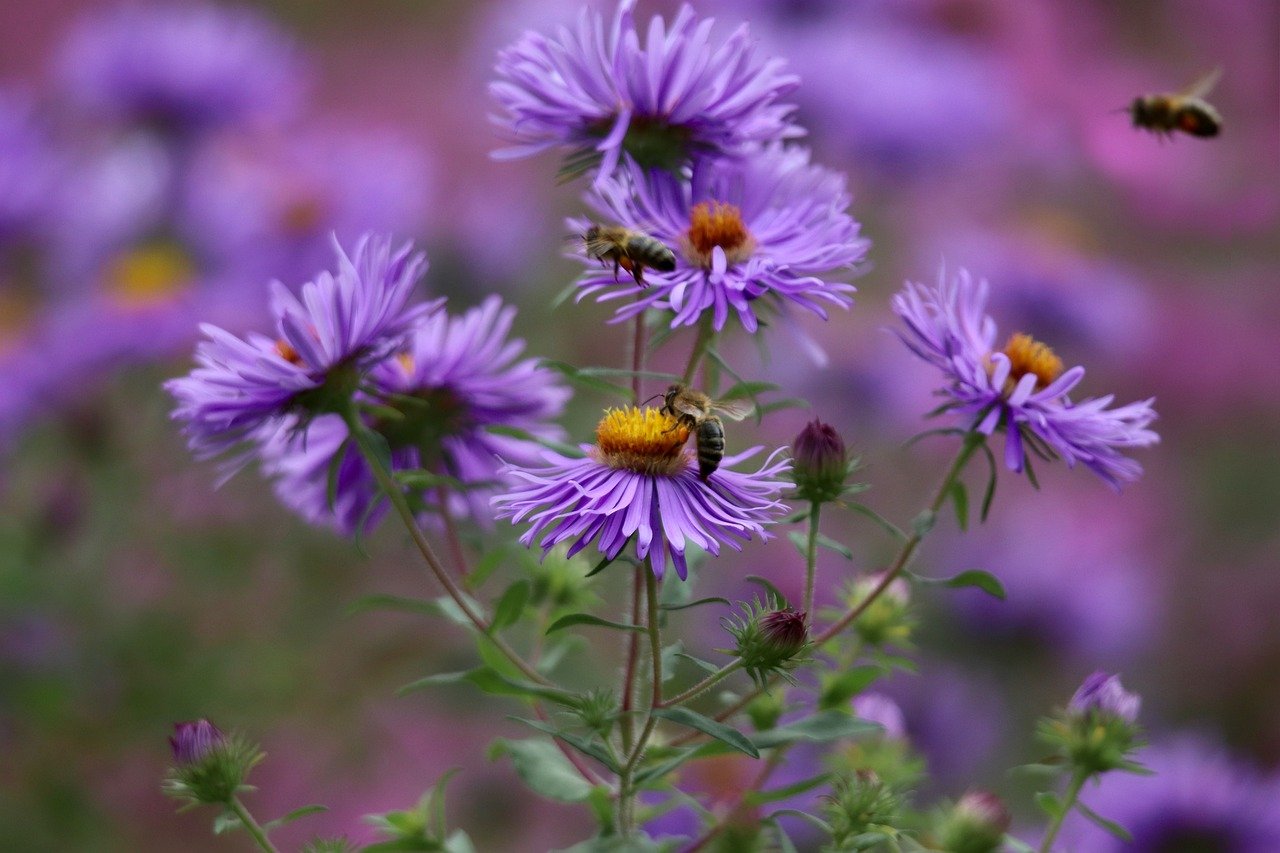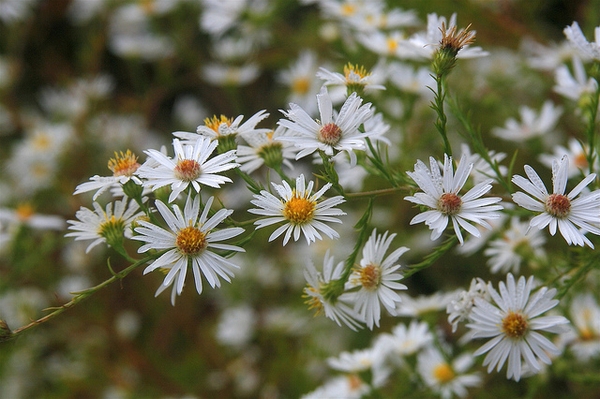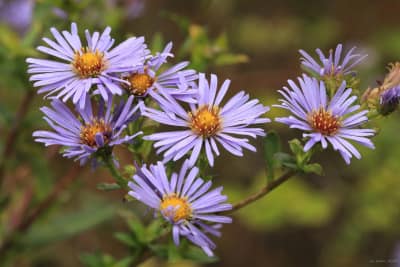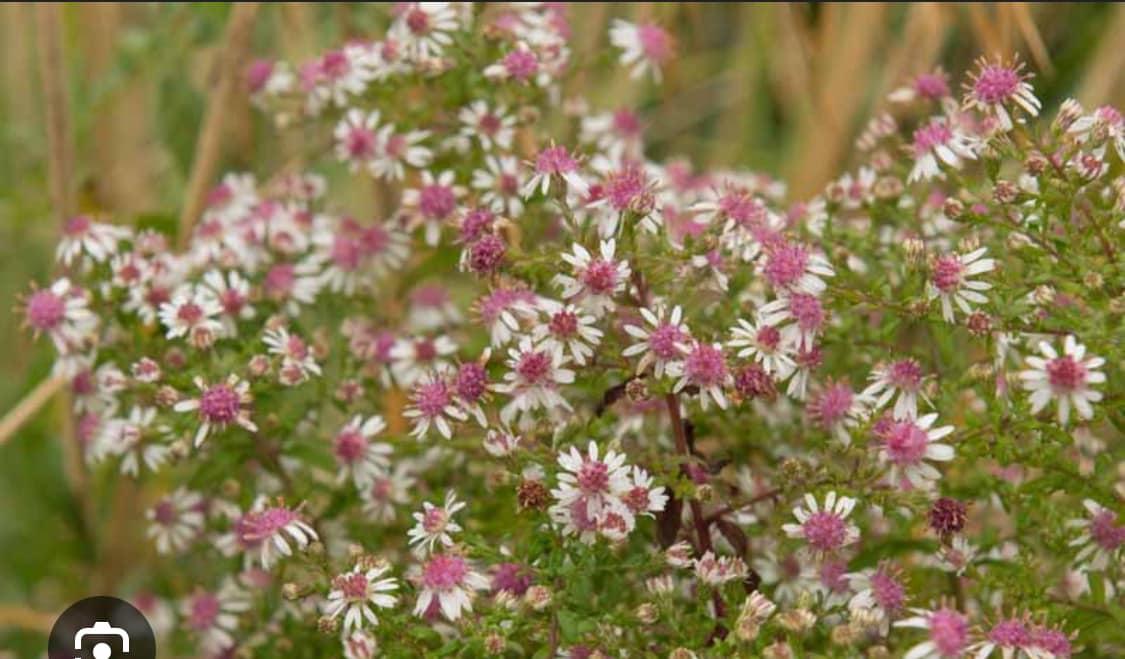
As summer bids farewell and autumn paints the world in fiery hues, our gardens yearn for a touch of magic. Enter asters, the quintessential fall flower, with their vibrant blooms that defy the chill and usher in a season of breathtaking beauty. These daisy-like wonders come in a kaleidoscope of colors and boast a long bloom time, ensuring your garden remains a showstopper well into the crisp fall months. But with so many varieties to choose from, where does one begin?
This guide unveils 10 of the most captivating aster flowers, each offering a unique charm to your autumnal haven. Whether you crave a bold burst of color or a delicate whisper of elegance, there’s an aster waiting to steal the show.
This post may have affiliate links. This means that sometimes when you click a link on our site and make a purchase on Amazon, we may earn a small commission at no additional cost to you. We only recommend products we truly believe in, and your support helps keep us running!
Unveiling the Aster’s Fall Palette: A Symphony of Colors
Asters are nature’s flamboyant artists, splattering your garden with a spectrum of colors that rival a fall foliage display. Here are some of the most captivating hues you can incorporate:

Classic Cool: Embrace the essence of fall with asters boasting shades of lavender, purple, and violet. The New England Aster (Symphyotrichum novae-angliae), with its densely packed, violet blooms, creates a mesmerizing sea of color.

For a touch of whimsy, consider the Heath Aster (Aster ericoides), adorned with dainty, lavender flowers that sway gently in the breeze.

Fiery Flair: Ignite your garden with asters that echo the fiery tones of autumn leaves. The Red-Stemmed Aster (Aster novae-angliae) lives up to its name with vibrant reddish-purple blooms that stand tall on burgundy-hued stems.

The Calico Aster (Aster novae-angliae ‘Calico’) offers a mesmerizing blend of scarlet, crimson, and white, adding a touch of dramatic flair.
- Sunny Delights: For a burst of sunshine that brightens even the chilliest day, introduce yellow asters to your garden. The Golden Jubilee Aster (Aster novae-angliae ‘Golden Jubilee’) dazzles with golden-yellow blooms that resemble miniature suns. The Woods Aster (Aster acuminatus) offers a softer touch with its cheerful, pale yellow flowers that dance amongst the changing leaves.
- Blushing Beauties: Add a touch of romance to your fall display with asters boasting shades of pink and rose. The Pink Shell Aster (Aster novi-belgii ‘Pink Shell’) lives up to its name with delicate, shell-pink blooms that create a soft, ethereal look. The Bushy Aster (Aster dumosus) presents a vibrant spectacle with rosy-purple flowers that form a compact, delightful bush.
Beyond Color: Exploring Aster’s Diverse Forms
Asters aren’t just a one-trick pony when it comes to aesthetics. They offer a variety of heights and flower shapes, allowing you to create a multi-layered and visually captivating display. Let’s delve into some of the most fascinating forms:
- Showstopping Stalwarts: For a dramatic impact, consider tall asters that create a vertical dimension in your garden. The Michaelmas Daisy (Aster laevis) boasts large, vibrant blooms atop majestic stems that reach up to 6 feet. The Willow Aster (Aster vimineus) adds a touch of elegance with its cascading, starry-eyed flowers on slender, arching stems.
- Compact Charmers: If space is a constraint, fret not! Asters offer a delightful selection of dwarf varieties that pack a punch in terms of color and charm. The Blue Dwarf Aster (Aster novi-belgii ‘Blue Dwarf’) offers a burst of sapphire blue in a compact form, perfect for borders and edging. The Pink Daisy Aster (Aster novae-angliae ‘Pink Daisy’) brings a touch of whimsy with its cheerful, daisy-like blooms adorning a low-growing form.
- Feathery Friends: For a delicate and textural touch, consider asters with feathery, needle-like foliage. The Heath Aster (Aster ericoides) delivers a cloud of lavender blooms nestled amongst a bed of soft, green needles. The Fringed Aster (Aster novae-angliae ‘Friesland’) boasts an otherworldly beauty with its feathery, lavender petals that seem to dance on the wind.
Planting and Caring for Your Fall Aster Symphony
Now that you’ve discovered the mesmerizing world of asters, let’s explore how to cultivate a thriving fall symphony in your own garden:
Choosing Your Stars: Asters thrive in a wide range of USDA hardiness zones (3-8), so research varieties that suit your climate. Consider factors like bloom time, height, and desired color palette when making your
Planting and Caring for Your Fall Aster Symphony
- Sun Salutations: Most asters prefer a location bathed in at least 6-8 hours of direct sunlight daily. However, some varieties like the Wood Aster (Aster acuminatus) tolerate partial shade, making them ideal for dappled sunlight areas.
- Soil Secrets: Asters favor well-drained soil that’s on the slightly acidic side (pH range of 6.0-7.0), ensure to check your soil pH. Amending your soil with compost or aged manure before planting can improve drainage and provide essential nutrients.
- Planting Power: The ideal planting time for asters depends on your climate. In warmer zones (zones 7 and above), you can plant them in spring or early fall. However, for colder regions (zones 3-6), fall planting is recommended to allow the roots to establish before winter. Space your aster plants according to their mature size, typically 12-24 inches apart.
- Watering Wisdom: Asters are fairly drought-tolerant once established, but they appreciate consistent moisture during their initial growth phase. Water deeply at the base of the plant, allowing the soil to dry slightly between waterings.
- Feeding Frenzy: While asters don’t require heavy feeding, a light application of balanced fertilizer in early spring can promote healthy growth and abundant blooms. Opt for a slow-release fertilizer to ensure a steady supply of nutrients throughout the season.
- Deadheading Delights: To extend the blooming period of your asters, practice deadheading. This involves removing spent flowers by pinching or snipping them just below the faded bloom head. This not only encourages new blooms but also keeps your garden looking tidy.
- Winter’s Embrace: Most asters are considered herbaceous perennials, meaning they die back to the ground in winter and return the following spring. Once the first frost arrives, cut back the dead stems to a few inches above the ground. Apply a layer of mulch around the base of the plant to protect the roots from the harsh winter temperatures.
Asters: More Than Just Pretty Petals
Beyond their undeniable beauty, asters offer a plethora of benefits to your garden ecosystem:
- Pollinator Paradise: Asters attract a multitude of pollinators, including butterflies, bees, and hummingbirds. Their vibrant blooms provide a valuable source of nectar during the fall months, when other flowers are scarce.
- Low-Maintenance Marvels: Asters are generally low-maintenance plants that are relatively pest and disease resistant. This makes them a perfect choice for busy gardeners who don’t have a lot of time for upkeep.
- Cutting Garden Gems: Many aster varieties make excellent cut flowers. Their long, sturdy stems and vibrant blooms add a touch of fall magic to indoor arrangements.
Conclusion: Embrace the Aster Symphony
With their captivating colors, diverse forms, and easy-going nature, asters are a true garden gem. From the fiery hues of the Red-Stemmed Aster to the delicate charm of the Pink Shell Aster, these fall bloomers offer endless possibilities for creating a breathtaking display. So, as summer wanes and autumn unfolds its vibrant canvas, consider incorporating asters into your garden. Let their symphony of color and form become the grand finale to your growing season, a testament to the enduring beauty of nature’s artistry.
